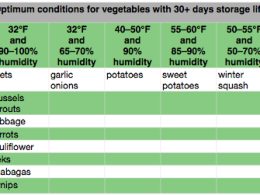Have you ever stopped to think about the journey of your food? The process from farm to table is a complex and fascinating one, involving multiple stages and countless individuals. From the hardworking farmers who grow the crops, to the skilled chefs who prepare it in restaurants, every step plays a vital role in bringing food to our plates. In this blog post, we’ll take a closer look at each stage of the journey and explore what happens behind-the-scenes before your meal arrives on your plate. Get ready for an eye-opening ride!
Farming
Farming is where it all begins. The process of growing crops and raising livestock is the foundation of our food system. It’s a demanding job that requires hard work, dedication, and a deep understanding of agriculture.
Farmers must carefully select seeds for planting and monitor soil conditions to ensure optimal growth. They also need to protect their crops from pests and disease by using pesticides or natural methods such as crop rotation. Raising livestock involves providing adequate food, water, shelter, and medical care.
Farms come in many shapes and sizes—from small family-owned operations to large industrial farms with thousands of acres—and can be found all over the world. Regardless of size or location, farmers play an essential role in feeding our growing population.
However, farming is not without its challenges: unpredictable weather patterns due to climate change can cause droughts or floods; rising costs for equipment or labor may make it difficult for smaller operations to stay afloat; competition from imported goods can drive down prices for local producers.
Despite these obstacles, farmers continue to work tirelessly day after day because they know how important their contributions are to society’s well-being.
Food Processing and Distribution
Food processing and distribution play a critical role in getting the food we eat from farms to our tables. Once crops are harvested, they go through various stages of processing before being distributed to grocery stores or restaurants.
The first step is washing and cleaning the produce to remove any dirt, debris, or chemicals that may have accumulated during harvesting. Then comes sorting and grading based on size, color, and quality.
Processed foods undergo different processes depending on their type. For example, fruits may be canned or made into jams while vegetables can be frozen or pickled. Meat products are usually cleaned, deboned, cut up into portions then packaged for sale.
Once processed and packaged properly according to industry standards it’s ready for transportation from manufacturing facilities to regional warehouses. Here they’re sorted again then sent out in refrigerated trucks for delivery all over the country.
Because of this process we enjoy fresh produce year-round regardless of seasonality while also having access to specialty ingredients from other parts of the world.
The Grocery Store
The Grocery Store:
Once the food leaves the processing and distribution centers, it makes its way to grocery stores all over the world. Walking into a grocery store is like stepping into a wonderland of delicious possibilities. The shelves are stocked with fresh fruits and vegetables, meats, dairy products, baked goods, packaged foods and so much more.
Grocery stores offer customers an array of choices for their daily meals or special occasions. From organic produce to exotic spices from far-flung corners of the globe; everything is available under one roof. However, not all groceries are created equal.
Different grocers can have different sourcing policies that impact how fresh their items are on display or how ethical they were produced. Regardless of where you shop though, there’s always something new to discover at your local supermarket.
Many grocery stores have now implemented online ordering systems as well as delivery options which make shopping even more convenient in our ever-busy lives. With just a click away from getting what we need without having to physically go out shopping – technology has definitely changed the game!
Grocery stores play an important role in bringing us fresh and flavorful ingredients every day!
The Restaurant
The journey of your food from farm to table doesn’t end at the grocery store. It continues on to the restaurant where chefs and cooks transform raw ingredients into delicious and visually appealing dishes.
When you order a meal at a restaurant, it’s easy to forget about all the hard work that went into sourcing and preparing each ingredient. But behind every plate is a team effort of farmers, distributors, and culinary professionals.
Chefs carefully choose their ingredients based on freshness, quality, seasonality, and availability. They collaborate with local farmers to feature regional flavors and support sustainable agriculture practices.
In the kitchen, skilled cooks use various techniques such as roasting, grilling, sautéing or baking to elevate each component’s flavor profile while ensuring proper cooking temperatures for safety purposes.
Presentation is also an essential aspect of dining out. Chefs make sure that every plate looks beautiful by arranging foods creatively using different colors textures patterns or garnishes.
Finally comes service – waiting staff are trained in providing customers with excellent service by explaining menu items answering questions suggesting wine pairings etc., making sure everyone has an enjoyable dining experience from start to finish!
Conclusion
Understanding the journey of our food from farm to table is essential for making informed decisions about what we eat. We may not always have control over the entire process, but by being knowledgeable consumers, we can make a significant impact on our health and the environment.
Farming practices play an integral role in shaping the quality and nutritional value of our food. The use of sustainable farming methods helps to maintain soil health and reduce environmental degradation. Food processing and distribution are crucial links in getting food from farms to grocery stores or restaurants.
Grocery stores serve as main channels through which consumers obtain their daily supply of fresh produce. When shopping at these outlets, it’s vital to look out for locally grown options that support local farmers while also ensuring freshness.
When dining out at restaurants, paying attention to menu selections can help guide healthier eating habits. As more people become aware of this process, there has been a rise in demand for organic foods that are free from harmful chemicals such as pesticides.
Understanding how our food gets from farms onto our plates is a critical step towards leading healthy lives. From farming practices all the way through restaurant menus- every aspect plays its part in providing nourishment with minimal negative impacts on the environment while supporting local communities along the way!











